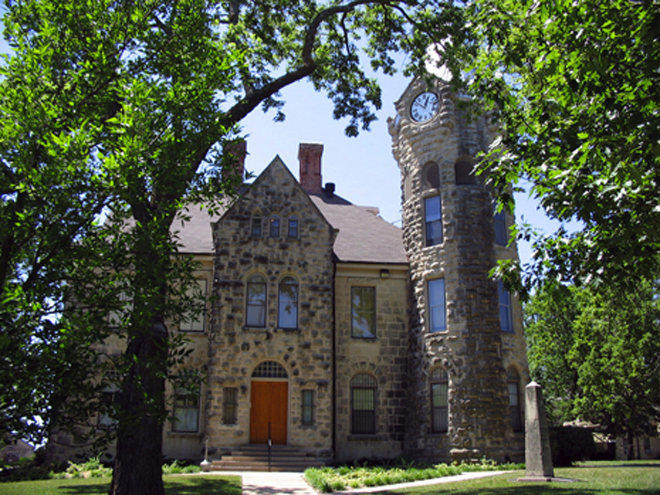
FAYETTEVILLE, Ark. – University of Arkansas researchers examined records of 65,987 daily mean temperature observations to reconstruct climate data in Manhattan, Kan., for the past 180 years and have found that 19th century temperatures were significantly cooler than in the 20th and early 21st centuries.
Dorian J. Burnette and David Stahle of the University of Arkansas and Cary Mock of the University of South Carolina report their findings in the March 15 issue of the Journal of Climate.
Kansas has long attracted farmers and is considered to be the “bread basket” of the country, but Burnette’s study shows the state’s other reputation.
“It’s also subject to large climate variability,” he said. The records describe droughts, temperature extremes, blizzards and heat waves, weather variability patterns that continue today.
“The socio-economic implications are far reaching,” he said.
By examining the daily data from seven historical stations and four modern stations in Kansas, Missouri and Oklahoma, Burnette extracted the daily mean temperature for each day of the year dating back to July 1, 1828, computed seasonal and annual temperature means for each year, and looked at how these numbers have changed over time. He also calculated the most extreme warm and cold events for each year. He found that the cold extremes are changing in relation to the warm extremes, warming at almost twice the rate as the warm extremes.
“It still gets cold today, but the trend from 1828 to the present day is unmistakable,” he said. “There is a warming trend in the cold extremes of about 5 degrees Celsius since 1855.” The data show an accelerated warming trend since 1969, again driven by a rise in cold season temperature extremes.
“This is consistent with what we see globally on average,” Burnette said.
He spent months poring over handwritten 19th century documents from historic forts and other early civilian observers in Kansas, Missouri and Oklahoma. In the early 19th century, the government developed an interest in the impact of weather on human health, so as forts expanded into western territories, surgeon generals at the forts were given a thermometer and rain gauge and ordered to keep detailed records of the weather. By the second half of the 19th century, additional observations were available from cooperative observers and the early Weather Bureau. Burnette studied records from the U.S. Army Surgeon General, the Smithsonian Institution and the Signal Service housed in the National Archives in his quest to find the detailed weather information from these early observers. Sometimes the information could be challenging to interpret – and not just because 19th century handwriting can be challenging to read on faded paper.
“Meteorology was in its infancy at the time,” Burnette said. If someone recorded that “ice pellets” fell, did he mean sleet, snow or hail? This uncertainty highlights Burnette’s biggest challenge – the likelihood of error in the daily record.
“It’s hard to do standard techniques on these data” because of the likelihood of bias within the data sets, Burnette said. Different observers might make different observations. Different instruments might take slightly different readings. The placement of an instrument would affect its accuracy. And many of these changes in placement, observer or instrument did not get recorded.
“We sometimes had to resort to statistical methods to tell when they moved an instrument around,” Burnette said.
He took many steps to analyze the data, including sorting it into batches and cross-checking the different stations with one another to see if they reported similar weather conditions. Severe abnormalities in the data could be thrown out if one station was in large disagreement from the surrounding network of stations.
The computer code Burnette created to resolve the data is available to others who want to develop additional climate reconstructions from historical data.
“There’s a lot more data out there awaiting recovery,” he said.
Burnette holds a doctorate in environmental dynamics, and Stahle is Distinguished Professor of geosciences in the J. William Fulbright College of Arts and Sciences. Mock is associate professor of geography at the University of South Carolina.
The research was supported in part by the National Science Foundation.
Topics
Contacts
Dorian J. Burnette, geosciences
J. William Fulbright College of Arts and Sciences
479-575-6741, djburne@uark.edu
Melissa Blouin, director of science and research communication
University Relations
479-575-3033,
blouin@uark.edu